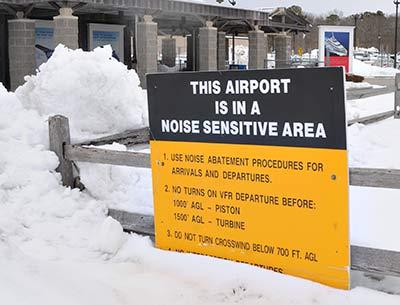Focus on Changes at Ditch Plain Condos
Focus on Changes at Ditch Plain Condos
Montauk’s Ditch Plain, where the future of what had been the East Deck Motel stirred recent interest in preserving its oceanfront tract, was before the East Hampton Town Zoning Board of Appeals on March 3 when applications to replace two mobile homes on the ocean at Montauk Shores Condominiums with two that would be larger came up for public hearing.
On the eastern side of Ditch Plain, Montauk Shores Condominiums is an unusual trailer park, with some of the 29 oceanfront units there reportedly valued in the neighborhood of $1 million.
The applicants who want larger mobile homes are Tom and Peggy Dempsey and the Neubert Trust, who were represented at the hearing by George B. Thansen II, who would install them. They would each contain 870 square feet and be placed one foot farther seaward than the existing ones.
“I’m in favor of larger homes, but where is the limit,” Richard Carvell, a Montauk Shores resident, asked the board. He was the lone speaker in opposition to the applications at the hearing, but a flurry of letters opposing them have since been received, including three from organizations active in Montauk affairs, the Ditch Plains Association, Concerned Citizens of Montauk, and the Surfrider Foundation.
The Dempseys need two variances from required setbacks from the bluff crest, while the Neubert Trust is asking for three similar variances.
Lisa D’Andrea of the town’s Planning Department, noted, in her memo on the application, “This is one of the most erosive areas along Montauk’s oceanfront, therefore the bluff crest is always subject to being located further landward over time. The risk from coastal storm events to the applicant’s property and to surrounding properties from displaced materials is also a legitimate concern.”
Mr. Carvell said he was concerned by what could happen during a major storm. He pointed out that the coverage on the Neubert property would be more than double what is currently there, and that the Dempsey trailer, the one closest to his own, was almost double.
He expressed the belief that the board that runs the condominiums is more concerned with the oceanfront units than the bulk of the trailers at the site. It is a view shared by another owner in the park, Dr. Daniel Hannigan. “I have no faith in the board to do the right thing,” he wrote in a letter to the zoning board. “If the board continues to approve this huge mess, it won’t be long before we look like Rockaway Beach,” he said.
Mr. Thansen was supposed to deliver updated plans for one of the applicants by the zoning board’s March 10 work session, but brought it in after the deadline. The board discussed the application that night, considering whether to hold a second public hearing. The members decided, however, to table the applications, and “and see what is coming in,” as John Whelan, the board’s chairman, put it. Yesterday, Mr. Whelan said the board would discuss Mr. Thansen’s late submission on Tuesday.
Meanwhile, a renovation project at 11 Ditch Plain Road being done by Sean MacPherson, a well-known hotel and restaurant owner who has several other properties at Ditch, is expected to eventually land in the zoning board’s hands.
Originally zoned for hotel use, the site contains several rental cottages, which were allowed to remain after the area was rezoned for residences. The renovation was begun last year, after which the Building Department received several affidavits from neighbors claiming that use had been abandoned. They argued that the Building Department erred when it issued a building permit allowing Mr. MacPherson, who also owns the Crow’s Nest restaurant and nearby Pharaoh’s Cottages, as well as a private residence in Ditch, to renovate the cottages.
The Ditch Plains Association took up the cause, bringing in an attorney, Christopher Kelley of Twomey, Latham, Shea, Kelley, Dubin & Quantarro. The department then turned, in January, to the zoning board for guidance.
However, Beth Baldwin, the zoning board attorney, told the board that the town attorney’s office had decided the matter should be sent back to the Building Department for a determination about whether cottages, with the work completed, should receive a certificate of occupancy. Those opposing the use could then appeal to the zoning board, she said.
With Mr. Kelley on one side, and another law firm, Esseks, Hefter & Angel, representing Mr. MacPherson, the odds are likely that the board will have to weigh in.


